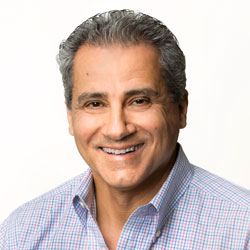Old, traditional processes for hardware and server deployment could take many weeks, even months, of planning. This process includes:
- Picking the deployment site
- Buying hardware, networking and storage equipment
- Planning and designing the site and equipment
- Deploying the hardware and networking equipment
- Manually installing the software components (Operating System (OS) software, OS patches and application software
- Installing and configuring the application’s networking and storage
- And lastly, putting the application in an active state to support the new services.
On average, this process takes four to 10 weeks to complete.
Today, with the proliferation of ready-to-use cloud infrastructure resources, activating a new service is now automated and well-orchestrated. This new process achieves the same results in minutes that traditionally took weeks or months. In ECOMP, (Enhanced Control, Orchestration, Management & Policy), the coordination and step-by-step execution of these tasks to create a new service is called services orchestration, and is managed by the Master Service Orchestrator (MSO).
Like the conductor of a symphony, MSO works with many different existing and new network elements through various interfaces to gather the data needed to orchestrate new services or a Virtual Network Function (VNF). MSO creates a deployment plan or a template (the OpenStack template is called HEAT).
To populate the HEAT template, MSO works with the SDN Controller to retrieve a complete description of the networks and service being instantiated. MSO then calculates the compute requirements for the VNF (CPU and memory) and creates the storage topology for the VNF and inventory all of the data elements. The data elements assigned and reserved for the VNF are stored into another ECOMP component called Active and Available Inventory (A&AI). Once A&AI is successfully updated, MSO packages all the data into a template and uses the specific cloud interface to send the template to the cloud infrastructure. When the cloud infrastructure receives the template from MSO, it executes the instructions specified by MSO within the template. Finally, the cloud infrastructure returns an acknowledgement back to MSO to indicate the successfully onboarding of the VNF and availability of the new services. Unlike the tradition deployment method, it takes an average of only four to 10 minutes to complete this process.
MSO is a critical component of the ECOMP infrastructure. But what is even more powerful is the way MSO collaborates with the other ECOMP components to orchestrate VNFs that have not been done before. This new approach has provided unprecedented efficiency and agility for deploying new services for AT&T, and we believe it is a game-changer for us and the broader industry.
Want more information about how this all comes together? Read our white paper and send us your thoughts.
Chaker Al-Hakim, Assistant Vice President, AT&T ECOMP

– See more at: http://about.att.com/innovationblog/041516vnfautomation#sthash.wSsAy7K7.dpuf
PR Archives: Latest, By Company, By Date